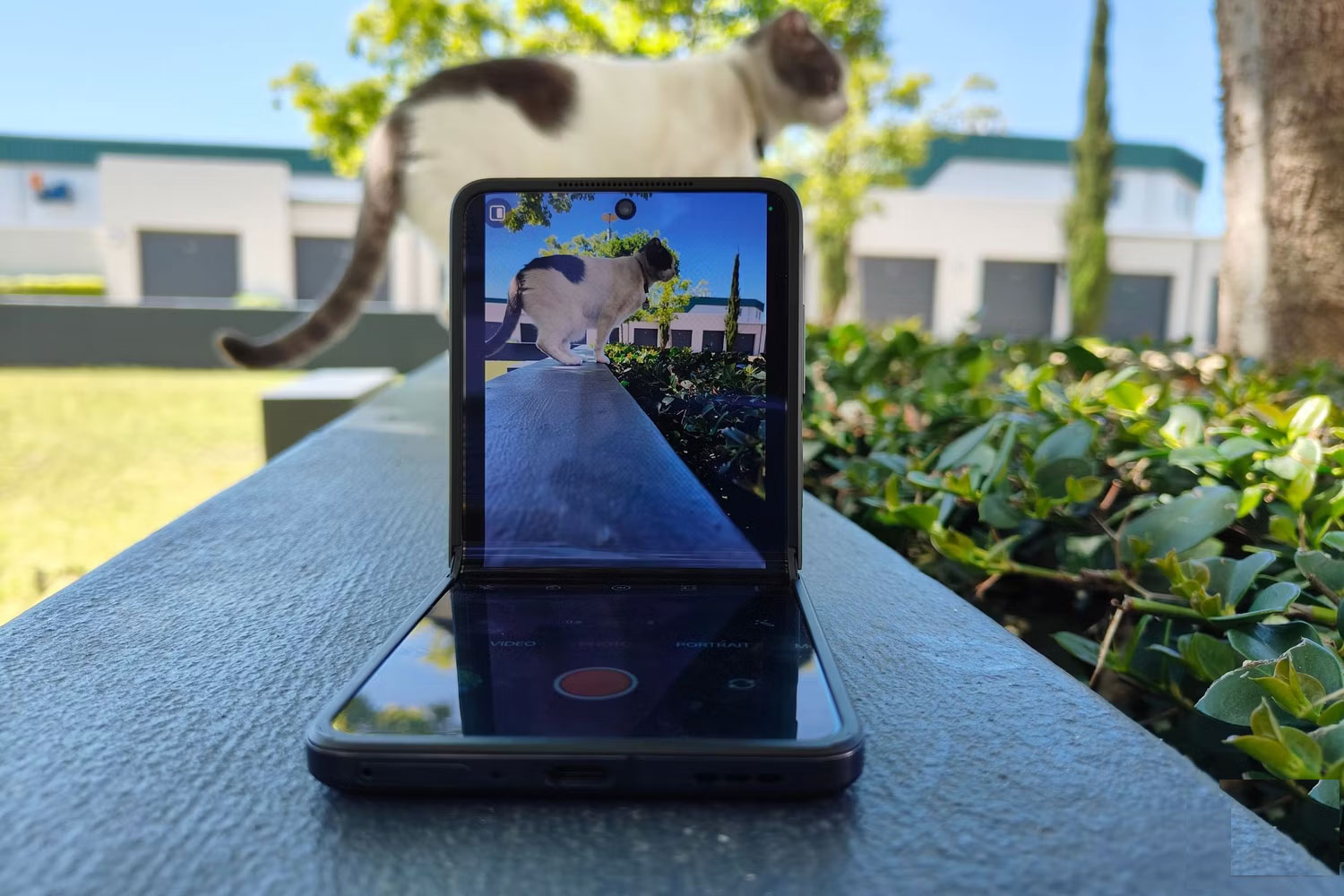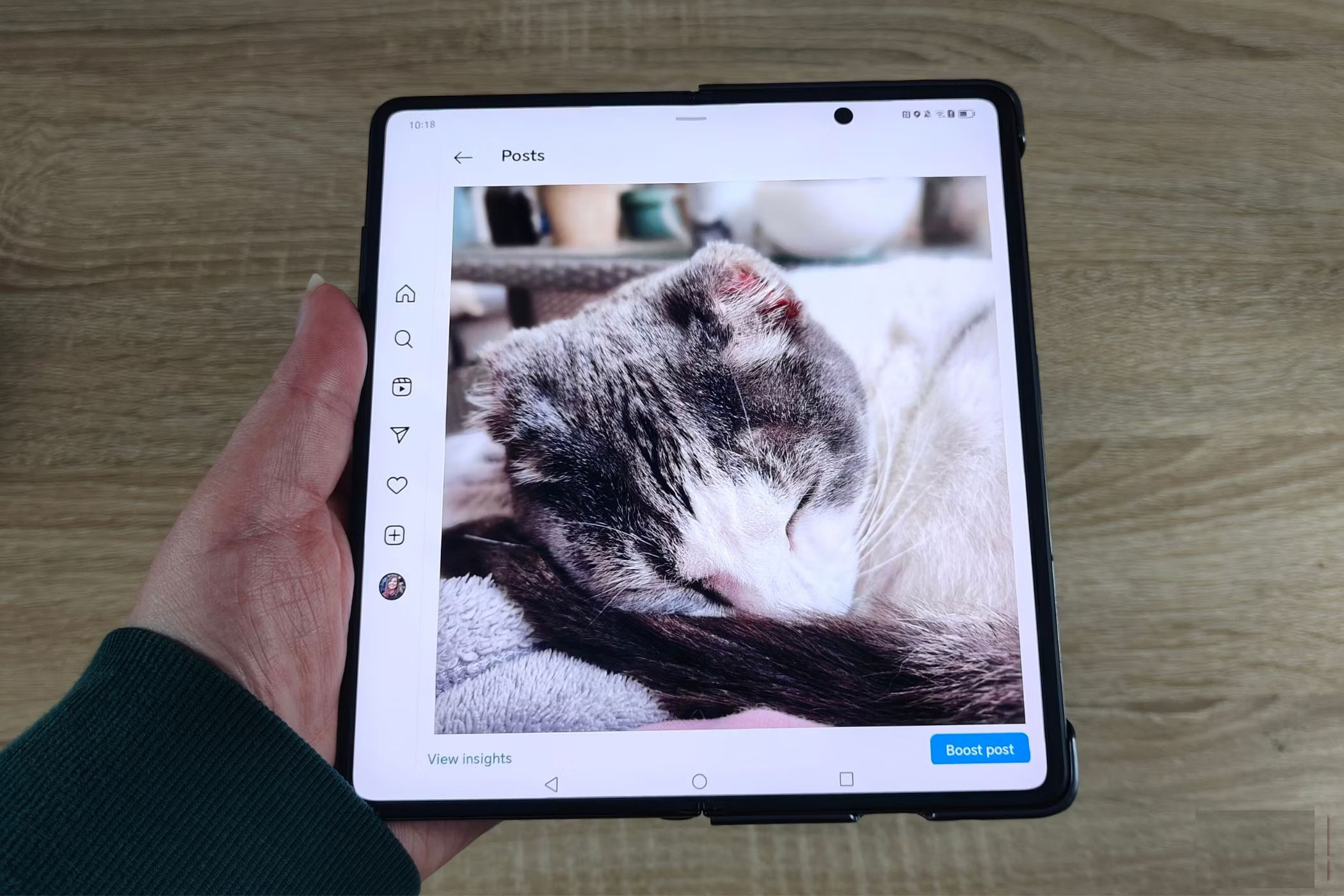Why are many people still hesitant to buy foldable screen phones?
As more and more smartphone brands invest in foldable phones, the diversity in the market is increasing.
1. Durability issues

Do you shudder to think of the days when your phone wasn't water or dust resistant? Minor accidents can completely ruin your device. And if you're someone who regularly cleans your smartphone with alcohol wipes, liquid resistance is a must.
But due to their flexible nature, foldable smartphones still have a long way to go when it comes to durability. Typically, when you power up a foldable phone, you'll see a series of warnings that include things like:
- Do not press hard or sharp objects against the phone screen.
- Keep your phone away from credit cards and devices affected by magnets.
- Avoid exposing your phone to liquids, sand, and dust.
Samsung has made some progress in phone durability, but there's still a lot that can go wrong with foldable devices. You also can't use a screen protector like you can on a regular smartphone.
2. They are still very expensive
The relatively new foldable display technology comes with a high price tag, even if the rest of the phone's specs aren't that impressive. The Samsung Galaxy Z Fold 6, for example, launched at $1,899. That compares to the company's non-folding flagship phone, the Galaxy S24 Ultra, which launched at $1,299.
Depending on what you're looking for in a phone, you might argue that the S24 Ultra is the better choice; with its built-in S-Pen, larger battery, and more powerful camera lens.
3. Technology still needs to improve

While companies have improved foldable phone technology, they still have a long way to go before they become an easy purchase decision without many trade-offs.
On many foldable smartphones, the crease is still noticeable. Devices that have been in use for a long time are starting to show degradation and dead pixels along the crease.
The fact that these phones also often include dual batteries results in smaller batteries, around 4,400mAh, instead of the 5,000mAh found on many flagship phones. While apps can adapt to the form factor, there aren't enough apps that take full advantage of the technology.
4. Updates are repeated
While technology is improving, many companies have fallen into the habit of making small updates between generations that don't justify the price increase. This is a problem for both foldable and non-foldable smartphone formats, but it's especially acute when it comes to foldable phones.
Some companies are more guilty of this than others. But often it feels like we're getting minor design tweaks instead of real advancements. When companies figure out how to make significant strides in durability and usability, people will be more likely to consider buying a foldable smartphone.
5. Foldability offers limited benefits

There are two main foldable phone form factors: Book and clamshell. The book form factor, seen on phones like the Galaxy Z Fold 6 and Honor Magic V2, folds vertically, allowing the screen to close like a book. The clamshell or compact form factor, seen on phones like the Oppo N3 Flip and Galaxy Z Flip 6, folds horizontally like a personal mirror or flip phone.
The benefits depend on the form factor you have. With a book-style phone, you get a larger screen when the phone is open. This can give you a better viewing experience and can increase productivity by having two apps on at once.
The benefit of the clamshell is that you can use the bottom of the phone as a tripod and fold the phone into a smaller form factor, making it easier to carry around. You can also see notifications and camera previews on the outer display.
While these are nice extras, given the price and durability limitations of these phones, they're not worth the trade-off. If you want a larger screen on your phone, switching to a tablet or PC will suffice. And most people don't need a tripod for quick shots.
The apps and features available on the external display are also still relatively limited. While there are some interesting ones, they don't take advantage of the full potential of the form factor.
It's true that phones like the Honor Magic V2 give us a lot of hope for the future of foldable smartphones. But it will take a bit more tweaking and development before people are ready to invest in a foldable smartphone.
You should read it
- The first Windows 10 build for a foldable computer appeared on a Microsoft server
- Will Samsung launch a foldable gaming phone?
- The first foldable iPhone is about to be released, the most surprising is the price
- Microsoft is embracing a foldable phone with three screens
- The case of the folding screen phone looks like this
- Microsoft is about to build a foldable tablet?
 10 best AI tools to support online sales today
10 best AI tools to support online sales today 8 best book reading software on iPhone
8 best book reading software on iPhone How to have perfect white balance when taking photos with a smartphone?
How to have perfect white balance when taking photos with a smartphone? How to free up space on Android
How to free up space on Android Summary of predicted information about iPhone 17 Slim
Summary of predicted information about iPhone 17 Slim